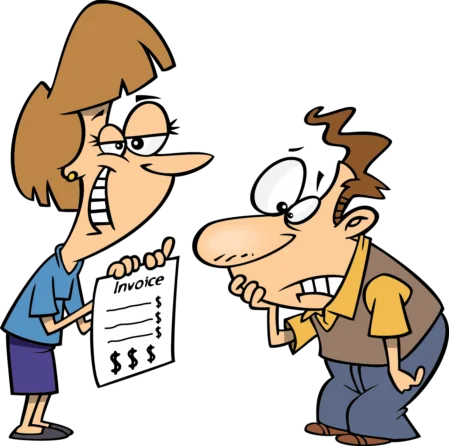Cash Conversion Cycle

Understanding the Cash Conversion Cycle
The Cash Conversion Cycle (CCC) is a crucial financial metric that measures the time it takes for a company to convert its investments in inventory and other resources into cash flows from sales. This cycle is particularly important for businesses that manage inventory, as it provides insights into operational efficiency and liquidity.
Components of the Cash Conversion Cycle
The Cash Conversion Cycle (CCC) consists of three main components:
- Days Inventory Outstanding (DIO)
- Days Sales Outstanding (DSO)
- Days Payable Outstanding (DPO)
Note:Other terms are also used for these components.

Days Inventory Outstanding
- What It Tells Us:Days Inventory Outstanding ( Average Days Of Inventory) measures the average number of days necessary to sell all inventory for a period.
- Calculation: Average Inventory for a Period divided by Cost Of Goods Sold for a Period multiplied by 365 (or period length)
- Formula: Days Inventory Outstanding (Average Days Inventory) = (Average Inventory / Cost Of Goods Sold) x 365 (or period length)
- How Normally Expressed: Decimal Number (Number of Days)
- Bad or Good: Normally the lower the number the better. You should use your financial information to spot trends and compare to industry averages if available.
- Additional Comments: A business with a low number has less funds "tied up" in inventory. A ratio of 45 tells us that it takes us an average of 45 days to sell our inventory.
Example:
| Days Inventory Outstanding | |||
| Information: Dollars in thousands | Month | Quarter | Year |
| Beginning Inventory For Period | 35 | 35 | 35 |
| Ending Inventory For Period | 37 | 42 | 39 |
| Average Inventory For Period | 36 | 33.5 | 37 |
| Cost Of Goods Sold For Period | 40 | 135 | 425 |
| Days | 30 | 90 | 365 |
| Days Inventory Outstanding | 27 | 22.3 | 31.8 |
| Average Inventory / Cost Of Goods Sold x (30 or 90 or 365) | |||
Our example ratios mean that for the month we sold our inventory in 27 days, for the quarter 22.3 days, and for the year 31.8 days.

Days Sales Outstanding
- What It Tells Us:Days Sales Outstanding ( Average Receivables Collection Days) measures the average number of days necessary to collect credit sales for a period.
- Calculation: Average Accounts Receivable for a Period divided by Net Credit Sales (Sales Billed On Account) for a Period multiplied by 365 (or period length in days)
If the total Net Credit Sales Amount is not available, Net Sales is often used as a substitute although Net Credit Sales is preferred for accuracy.
- Formula: Average Receivables Collection Days = (Average Accounts Receivable / Net Credit Sales) x 365 (or period length in days)
- How Normally Expressed: Decimal Number (Number of Days)
- Bad or Good: Normally, the lower the number the better. You need to compare this number to the credit terms you offer to your customers. Also, you should use your financial information to spot trends and compare to industry averages if available.
- Additional Comments: A high number suggests that a company is experiencing delays in receiving payments. This can lead to cash flow problems. A low number indicates that the company is getting its payments quickly. In other words, the company is promptly getting paid by its customers. A number under 45 is acceptable, although depending on credit terms, might need to be investigated for improvements. A ratio of 45 days tells us that it takes us 45 days to convert our receivables into cash. You need to compare this number to your normal credit terms that you grant your customers. If this is net 30, you may need to take action to speed up your collections.
Example:
| Days Sales Outstanding | |||
| Information: Dollars in thousands | Month | Quarter | Year |
| Beginning Accounts Receivable For Period | 60 | 60 | 60 |
| Ending Accounts Receivable For Period | 65 | 70 | 75 |
| Average Accounts Receivables For Period | 62.5 | 65 | 62.5 |
| Net Credit Sales For Period | 60 | 200 | 700 |
| Days | 30 | 90 | 365 |
| Days Sales Outstanding | 31.3 | 29.3 | 32.6 |
| Average Accounts Receivable / Net Credit Sales x (30 or 90 or 365) | |||
Our example ratios mean that for the month we collected our receivables in 31.3 days, for the quarter 29.3 days, and for the year 32.6 days.

Days Payable Outstanding
- What It Tells Us:Days Payable Outstanding (Average Accounts Payable Days) measures the average number of days that a company takes to pay its suppliers for a period. It indicates how well the company’s cash outflows are being managed.
- Calculation: Average Accounts Payable / Net Credit Purchases x 365 (or period length)
If the total Net Credit Purchase Amount is not available, Cost Of Goods Sold is often used as a substitute although Net Credit Purchases is preferred for accuracy
- How Normally Expressed: Decimal Number (Number of Days)
- Bad or Good: Normally the lower the better. You should use your financial information to spot trends and compare to industry averages if available.
- Additional Comments: A company with a high number takes longer to pay its bills and provides a source of additional temporary funds. A high number; however, may be be a red flag indicating an inability to pay bills on time. A ratio of 60 days tells us that it takes us 60 days to pay our supplier invoices. You need to compare this number to the normal credit terms that your suppliers grant you. If this is net 30, you may need to take action to speed up your payments or risk being "put" on a Cash on Delivery (COD) basis or even worse lose a supplier.
| Days Payable Outstanding | |||
| Information: Dollars in thousands | Month | Quarter | Year |
| Beginning Accounts Payable For Period | 31 | 31 | 31 |
| Ending Accounts Payable For Period | 32 | 35 | 34 |
| Average Accounts Payable For Period | 31.5 | 33 | 32.5 |
| Net Credit Purchases For Period | 30 | 140 | 420 |
| Days | 30 | 90 | 365 |
| Days Payable Outstanding | 31.5 | 21.2 | 28.2 |
| Average Accounts Payable / Net Credit Purchases x (30 or 90 or 365) | |||
Our example ratios mean that for the month we paid our payables in 31.5 days, for the quarter 21.2 days, and for the year 28.2 days.

Cash Conversion Cycle
- What It Tells Us:Cash Conversion Cycle measures the amount of time it takes for a company to convert its investments in inventory and other resources into cash flows from sales.
- Calculation:Cash Conversion Cycle (CCC) = Days Inventory Outstanding (DIO) +Days Sales Outstanding (DSO) − Days Payable Outstanding (DPO)
- How Normally Expressed: Decimal Number (Number of Days)
- Bad or Good: Normally the lower the better. You should use your financial information to spot trends and compare to industry averages if available.
- Additional Comments: A company with a high number takes longer to covert its receivables and inventory investments back to cash.
This equation combines all three components of the equation to provide a comprehensive view of how effectively a business manages its working capital.
| Cash Conversion Cycle (CCC) | |||
| Expressed In Days | Month | Quarter | Year |
| Days Inventory Outstanding (DIO) | 27 | 22.3 | 31 |
| Days Sales Outstanding (DSO) | 31.3 | 29.3 | 32.6 |
Days Payable Outstanding (DPO) | 31.5 | 21.2 | 28.2 |
| Days | 30 | 90 | 365 |
| Cash Conversion Cycle (CCC) | 26.8 | 30.4 | 35.4 |
| CCC=DIO + DSO - DPO | |||
Our example calculation means that for the month our cycle was 26.8 days, for the quarter 30.4 days, and for the year 35.4 days.
Industry Variations
It’s important to note that CCC values can vary significantly across different industries due to varying business models and operational practices. For instance, retail companies typically have shorter CCCs compared to manufacturing firms because they sell products directly to consumers without extensive production cycles.
Negative Cash Conversion Cycle
Some companies may experience a negative cash conversion cycle, meaning they receive payments from customers before they need to pay their suppliers. This situation often occurs in highly efficient online retail environments where rapid sales and favorable payment terms with suppliers are common.
In summary, understanding and managing the cash conversion cycle effectively can help businesses optimize their operations and improve their financial health by ensuring they maintain adequate liquidity while minimizing excess investment in inventory and receivables.
Cash Conversion Cycle Video
More Cash Conversion Videos

